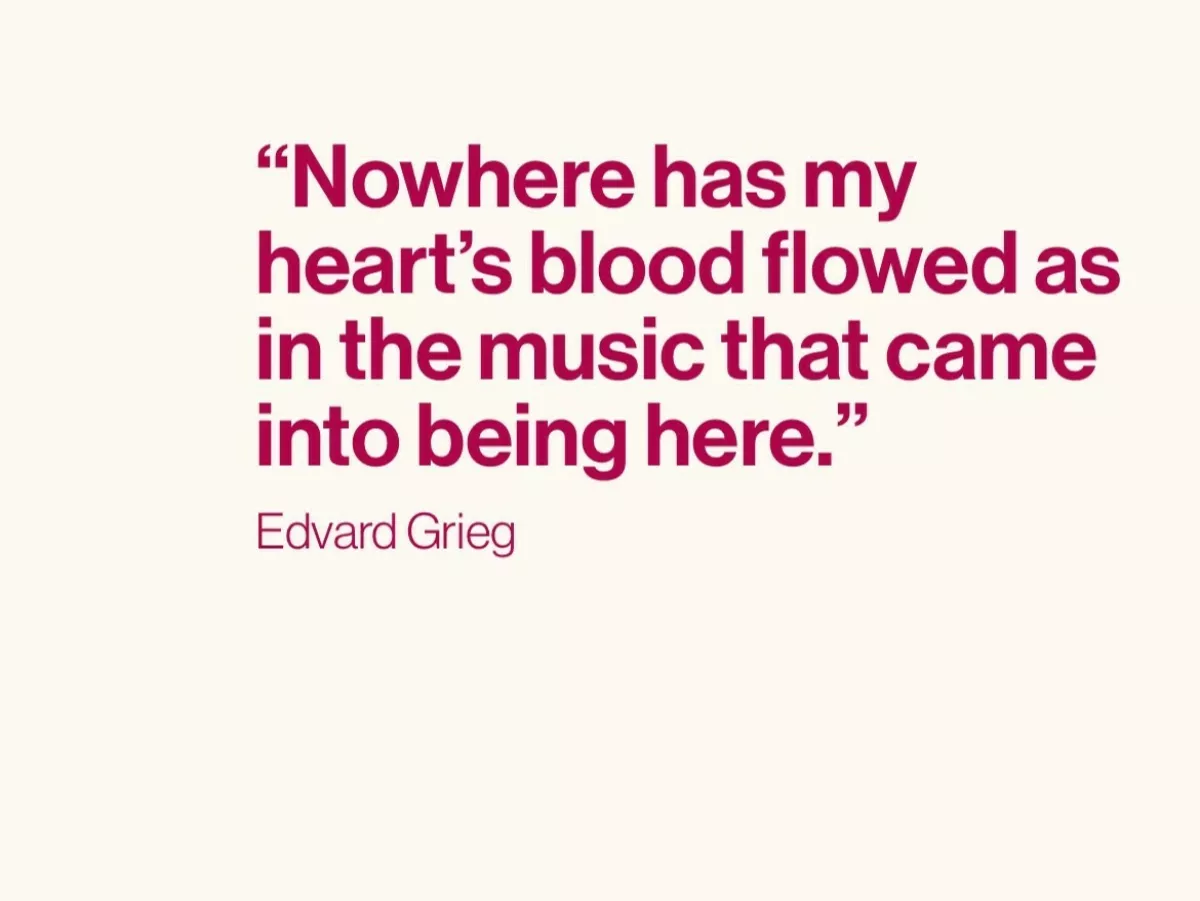String Quartet in G minor Op. 27 (1877–78)

“Nowhere has my heart’s blood flowed as in the music that came into being here.”Edvard Grieg
Edvard Grieg
(1843–1907)
String Quartet in G minor,
Op. 27
(1877–78)
Un poco andante – Allegro molto ed agitato
Romanze: Andantino – Allegro agitato
Intermezzo: Allegro molto marcato – Più vivo e scherzando
Finale: Lento – Presto al Saltarello
In 1877, Norwegian composer Edvard Grieg wrote his only completed string quartet in a tiny, isolated ‘composer’s hut’ in the Hardanger district of western Norway, after escaping the stress of teaching and conducting in Oslo.
Unfamiliar with the area, the first spot Grieg chose for his sanctuary proved insufficiently remote from curious locals, who dubbed it the ‘Komposten’, punning on the Norwegian words for composer and compost heap. It was also dangerously exposed to winter storms.
Grieg became so fed up with the situation that he enlisted a large group of local farmers – paid in food and a barrel of Hardanger beer – to relocate the hut, rolling it on logs to a new location.
The composer described the festive (and chaotic) event of the move in an 1886 article for Norden, Illustreret Skandinavisk
Revue, after which he played for the locals crammed into his hut, ‘to the accompaniment of a listener to my left, who constantly staggered against me so that I almost fell off my stool, and another to my right, who recited with such fervour that the saliva sprayed out onto the keys’.
Despite its boisterous christening, Grieg was thrilled with his new digs. ‘When the house was finally lifted up on its new foundation, it looked quite splendid, nestled between the birch and the mountain ash beside the crystal-clear fjord,’ he wrote.
Grieg’s String Quartet in G minor, which would premiere in Cologne in 1878, follows the Romantic innovations of Beethoven’s late string quartets, coloured by the Norwegian folk music so close to Grieg’s heart. It also draws on another work by Grieg, his song Spillamæd (Minstrels), setting words by Ibsen. In Grieg’s words, the quartet ‘strives towards breadth, soaring flight and above all resonance for the instruments for which it is written’.
Un poco andante – Allegro molto ed agitato
The grave opening of the first movement introduces us to the gloriously rich sound Grieg employs throughout the entire
quartet, the composer using double-stopping to create the illusion of a much larger ensemble. The quartet soon takes off with dark, agitated energy, interspersed with exquisitely lyrical passages.
Romanze: Andantino – Allegro agitato
A lilting cello melody over pulsing strings opens the second movement. Despite the singing melody, the movement is not without moments of anxious movement and intensity.
Intermezzo: Allegro molto marcato – Più vivo e scherzando
Dramatic shifts in mood continue in the third movement, dance elements cutting through like light shining amidst dark clouds.
Finale: Lento – Presto al Saltarello
The finale begins in a sombre mood, the music slowly cascading down from the violins to the depths of the cello. But the movement suddenly takes off, thrumming with the feverish sense of adventure listeners might recognise from Grieg’s Peer Gynt suites.
© Angus McPherson, 2024